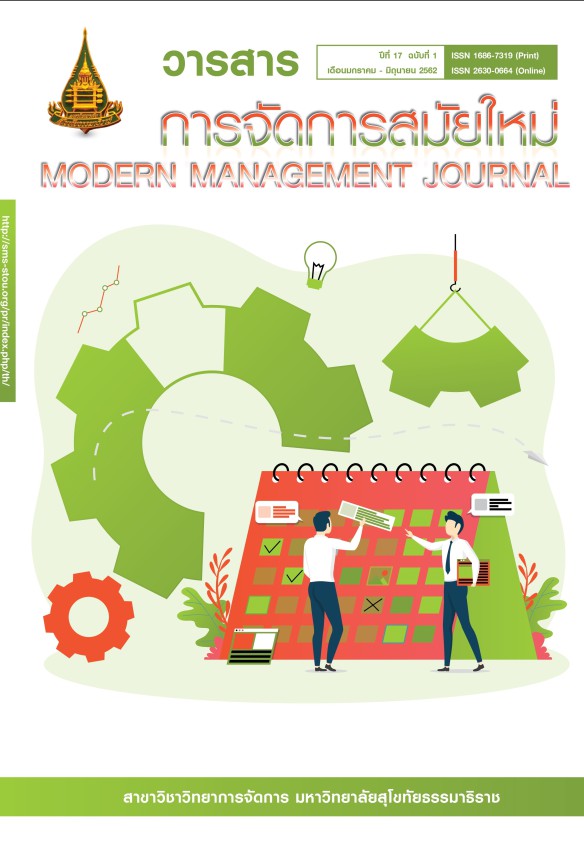LEGAL MEASURES TO CONTROL GOVERNMENT’S CONTINGENCY FUND FOR EMERGENCY
Keywords:
Contingency Fund for Emergency, Government Budget Management, Public Finance and Budget LawAbstract
This research aims to study legal measures to control government’s contingency fund for emergency by using qualitative research methods and in-depth interviews as research tools. Based on the studies of the rules and laws relating to the Contingency Fund for Emergency, the studies found three major problems: first, legal problems in controlling the size and proportion of the Contingency Fund for Emergency which increase continuously by government overspending, second, legal problems in controlling “the use” of Contingency Fund for Emergency, and third, legal problems in controlling a transfer of funds from Expenditure Budget to the Contingency Fund.
From such legal restrictions, the author has suggested more appropriate legal measures to control the Contingency Fund for Emergency of Thailand. Therefore, two major legislative amendments must be change in some areas, namely the State Fiscal and Financial Disciplines Act, B.E. 2561 and the Budget Procedure Act, BE 2561, by regulating the spending caps of Contingency Fund for Emergency, enforce a strict definition of Contingency Fund for Emergency for controlling the scope of use, and limit transferring funds from other budget categories to Contingency Fund for Emergency under good fiscal and financial discipline, in order to control the process of preparing and executing the Contingency Fund for Emergency. Improving the legal measures as recommended will make the Contingency Fund for Emergency be more appropriate and effective and also make a positive contribution to the fiscal stability and sustainability of the country in the long term.
References
Committee for a Responsible Federal Budget. (2010). What's An Emergency? Retrived from http://www.crfb.org/blogs/whats-emergency.
Jowell, J. L., Oliver, D., & O’Cinneide, C. (2015). The Changing Constitution. Oxford: Oxford University Press.
Kaewla-iad, S. (2017). Thailand Budget Law. Pathum Thani: Thammasat University. [in Thai]
Kerdlapphon, K. (2018). Legal Measures to Control Government’s Contingency Fund for Emergency (LL.D’s thesis). National Institute of Development Administration. [in Thai]
Keynes, J. (1936). The General Theory of Employment, Interest and Money. United Kingdom: Palgrave Macmillan.
Kopits, G., & Symansky, S. A. (1998). Fiscal Policy Rules. Washington, D.C.: IMF Occasional Paper.
Lertphaitoon, S., & Mewongukote, B., Varanyuwatana, S. (1998). Provincial Development budget of the House of Representatives. (2nd edition). Bangkok: Secretariat of the House of Representatives. [in Thai]
Lewis, V. B. (1952). Toward a Theory of Budgeting. Public Administration Review.
Meksupa, K. (2007). An Analysis of The Central Fund's Budget Allocation in Thailand (Master’s thesis). Faculty of Economics. Chulalongkorn University. [in Thai]
Mikesell, J. (1999). Fiscal Administration: Analysis and Applications for the Public Sector. New York: Harcourt Brace College.
Office of the Public Sector Development Commission, Good Governance. Bangkok: Office of the Civil Service Commission. [in Thai]
Organization for Economic Cooperation and Development. (2002). Economic Outlook 2: OECD Publishing.
Pessoa, M. (2016). Interview. , Washington, D.C.: IMF
Suwannathat, P. (1990). Kondee Sri Thammasat. Bangkok: Thammasat University. [in Thai]
Saikaew, S., Wattana, D., & Pattamasiriwat, D. (2001). Research Report on Strengthening of the Legislature Provisions in the National Budget Process: The Role of the Budget Management Committee. Bangkok: Prapokklao Institute. [in Thai]
Sirisamphan, T., Malakul, P., Saikaew, S., Pongkumnerd, A., Intaraagsorn, K., Romthaisong, Y., Saithongkum, J., Thanatchang, N., & Tublit, J. (2003). Research Report on System and Mechanism of Monitoring Development of Government Administration. Bangkok: Thailand Research Fund. [in Thai]
Sudswat, S., & Chuchet, T. (2016). Thailand Fiscal and Budget transparency According to international perspective. Thai plublica. Retrieved from https://thaipublica.org/2016/07/thailand- trasparency-reseach-group2 /. [in Thai]
Sujjapong, S., Chatameena, W., Punyaratabandhu, N., Kositanurit, B., & Sriphotchanat, N. (2008). The Studies of Fiscal Discipline in Thailand (Past to Present) and Guidelines for Strengthening Fiscal Discipline According to International Perspective. Bangkok: Fiscal Policy Office. [in Thai]
Suttiwattanaphan, N. (1982). Budget Examination: Economic and Budget Theories. Bangkok: Winyuchon Publication House. [in Thai]
Ungphakorn, P. (1975). The Principle of the National Budget: In the Memorial of the Cremation Ceremony of Somkhuan Kongsakorn at Wat Makutkasatriyaram. Bangkok: MPO. [in Thai]



